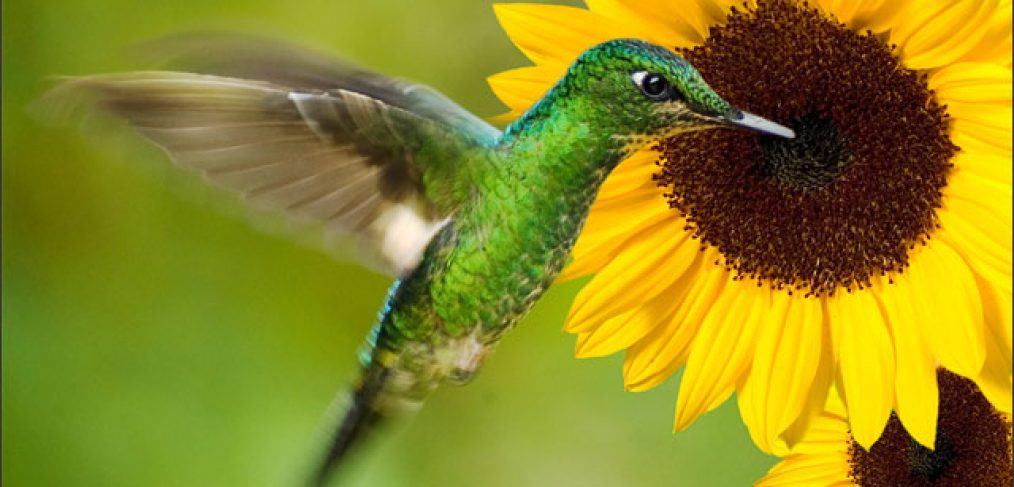
How to Attract Pollinators and Pest Eaters to Your Garden
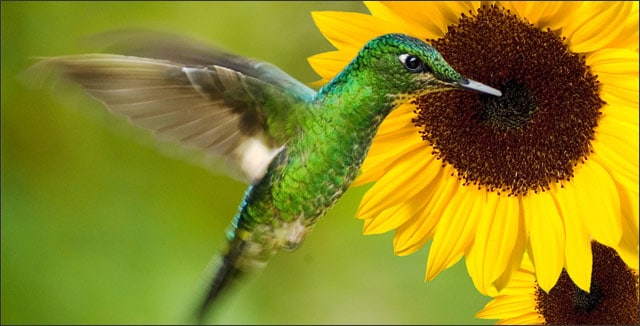
Have you ever noticed a fancy birdhouse and thought about building one yourself? I have such great memories of watching birds at my grandfather’s kitchen window, sitting at his breakfast table. He always kept a birdfeeder or two right by the window. A constant stream of finches and hummingbirds made for a happy morning quite often. However, what I didn’t learn until later was that some of those birds made the fruit and vegetables in his nearby garden grow bigger and healthier.
If you’ve been gardening for a long time, you probably know all about pollination. You’ve probably witnessed it occurring. In fact, it’s one of the best side benefits of having any kind of garden: you will make friends with all the little critters that inhabit a garden. Of them all, pollinators and pest-eating birds are a gardener’s best friend.
How Pollinators Work
Pollinators work by transferring the pollen from one plant to a second plant of the same species so it can fertilize and produce fruit and seed. Some plants can pollinate themselves but most require pollinators: insects, birds and even bats. In fact, one of every three bites of your food depends on a pollinator.
Bee keepers offer pollination services to commercial food growers: a semi-truck filled with bees which get carted around to fields all over the country to pollinate their crops. That’s how important this service is – and how scarce wild pollinators are becoming. All of our apples, almonds, blueberries, citrus fruits, melons, pears, plums, pumpkins and squash are grown with the help of these garden friends, as well as plants we grow to feed livestock and fiber plants like cotton.
As we’ve touched on before, scientists are starting to pinpoint some reasons we are seeing die-off of bee populations, which is a scary situation for our food production. Bees are the workhorses of pollination. Wild bees, however, are the in most peril. Honey production ensures that commercial honeybees will be protected but wild bees have only the protection we can give them.
Keep reading to see how you can help!
Other Benefits of Welcoming Birds and Pollinators
I don’t have to tell you the most obvious reasons to welcome birds, butterflies and, yes, even bees to your garden: joy! We live in a more and more rapidly advancing technical age and so many of us do not take the time to enjoy what nature offers. More and more of us are also choosing to live in a city, which means we see fewer varieties of wildlife and far less frequently.
If you have the chance to attract and shelter some of the smaller wild things even in a small garden, you should do so for the simple pleasure of existing with these creatures and being able to observe their lives. I guarantee your soul will be richer.
Beyond that, birds are often great pest-controllers. Sparrows, finches, and other birds eat weed seeds, which keeps you from having to de-weed your lawn or garden rows. The birds that are native to your area – if they have sufficient shelter nearby to breed and protect a family – will do their foraging in your garden which means they eat a lot of the bugs who prey on your plants like aphids and slugs.
Of course, this means you have to limit your pesticide use on your plants. You might even consider building a bat house. Bats are excellent natural bug repellents. They eat mosquitoes.
Feed the Birds
There’s a lot of debate about whether it’s safe for the birds to feed them seed. I don’t want to exhaustively detail all the points here because I think both sides have merit. However, here are some of the benefits:
- Attract More Birds: If you live in Michigan, or anywhere along the migratory bird path, you may become quite the expert just by offering a feeder and a heated birdbath and sitting in your home with a pair of binoculars. This is especially true for songbirds.
It could be well worth any trouble to see more elusive birds and hear them singing in the trees. The Cornell Lab of Ornithology has an extensive database to search about the birds you are seeing in your garden and you can even get the Merlin Bird App for your phone and identify them -on the fly.
- Help Birds Survive: Wild birds have to adapt to fewer food and water sources, climate change and migratory birds are often very tired from their long travels when food is hard to find. When birds don’t migrate, harsh winters are often very hard for them to survive. Human provided seed and water that isn’t frozen can make a huge difference for many species of birds, as long as the food source is reliably supplied and isn’t tainted by pesticides (which can kill birds).
One study of black-capped chickadees in Wisconsin found that they survived at a much higher rate when supplied with seed by humans than when they were not. In urban areas, where wild food is harder to find, human provided seed and water helps birds reproduce earlier and more abundantly.
- Educate Yourself, Your Kids and Your Neighbors: How great would it be to have an abundance of these little wild things happily enjoying your garden right outside your door? If you have kids in a more urban area, this could be their only gateway – outside of the yearly vacation or trip to the nature center – to experiencing the world they live in! Plus, if it’s in your own backyard, you all have a greater chance to get to know the particular birds you see every day. Who knows? It might be the means of sparking in one of you a deep love for nature, which could turn into a calling or a career.
As you are planning your ornamental garden – or your vegetable garden – for this spring, consider dedicating more space for plants pollinators will like. Here’s a great list of plants designed to bring in birds, bees, butterflies and more! Happy Planning!
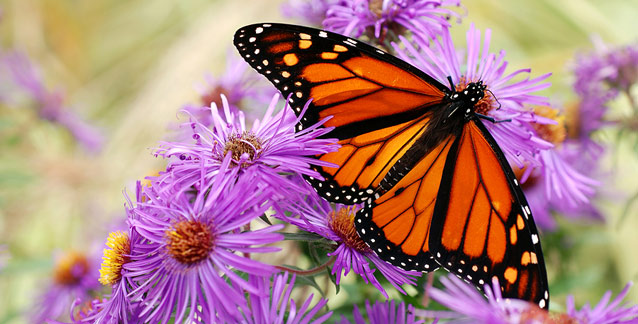
Plants that attract butterflies
- Alyssum
- Aster
- Bee balm
- Butterfly bush
- Calendula
- Cosmos
- Daylily
- Delphinium
- Dianthus
- Fennel
- Globe thistle
- Goldenrod
- Hollyhock
- Lavender
- Liatris
- Marigold
- Musk mallow
- Nasturtium
- Oregano
- Phlox
- Purple coneflower
- Queen Anne’s lace
- Sage
- Scabiosa
- Shasta daisy
- Stonecrop
- Verbena
- Yarrow
- Zinnia
Plants that attract butterfly larvae (caterpillars)
- Borage
- Fennel
- Grasses
- Hollyhocks
- Lupine
- Milkweed
- Nettle
- Thistle
- Willow
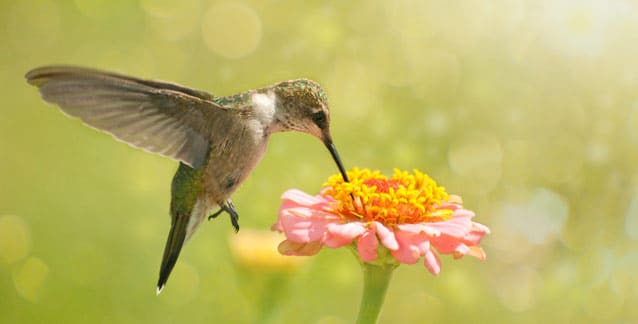
Plants that attract hummingbirds
- Ajuga
- Bee balm
- Begonia
- Bleeding heart
- Butterfly weed
- Canna
- Cardinal flower
- Century plant
- Columbine
- Coral bells (heuchera)
- Cleome
- Crapemyrtle
- Dahlia
- Dame’s rocket
- Delphinium
- Fire pink
- Four o’ clocks
- Foxglove
- Fuchsia
- Gilia
- Geranium
- Gladiolus
- Glossy abelia
- Hollyhocks
- Impatiens
- Iris
- Lantana
- Liatris
- Lily
- Lupine
- Nasturtium
- Nicotiana
- Paintbrush
- Penstemon
- Petunia
- Phlox
- Sage
- Salvia
- Scabiosa
- Scarlet sage
- Sweet William
- Verbena
- Yucca
- Zinnia
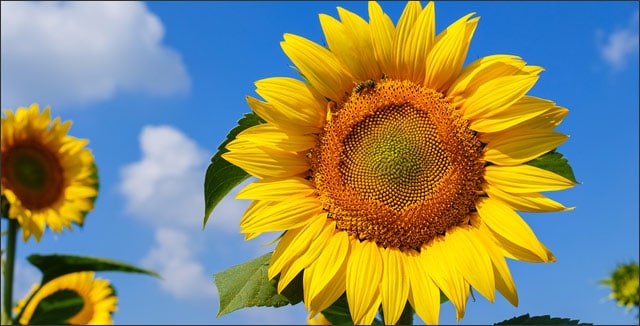
Perennials and Annuals that Attract Bees
- Allium
- Aster
- Basil
- Bee balm
- Bee plant
- Bergamot
- Blanket flower
- Borage
- Cosmos
- Flax
- Four o’clock
- Gaillardia
- Geranium
- Giant hyssop
- Globe thistle
- Goldenrod
- Helianthus
- Hyssop
- Joe-pye weed
- Lavender
- Lupine
- Marjoram
- Mint
- Mullein
- Paint brush
- Poppy
- Rosemary
- Sage
- Skullcap
- Sunflower
- Thyme
- Verbena
- Wallflower
- Wild rose
- Zinnia
Trees, Shrubs and Fruit that Attract Bees
- Almond
- Apple
- Blackcurrant
- Cherry
- Gooseberry
- Hawthorn
- Linden
- Locust
- Pear
- Plum
- Raspberry
- Strawberry
- Wild lilac
- Willow
Take Away: Attracting Pollinators
Something positive you can do for the earth this spring is to plant things to attract pollinators. With the disappearance of so much of wild prairie land that used to host such biodiversity of plants and animals, which is the natural home of pollinators like bees, these delicate creatures have to work harder and harder to get the food they need.
As you are planning your ornamental garden – or your vegetable garden – for this spring, consider dedicating more space for plants pollinators will like. Here’s a great list of plants designed to bring in birds, bees, butterflies and more! Happy Planning!



